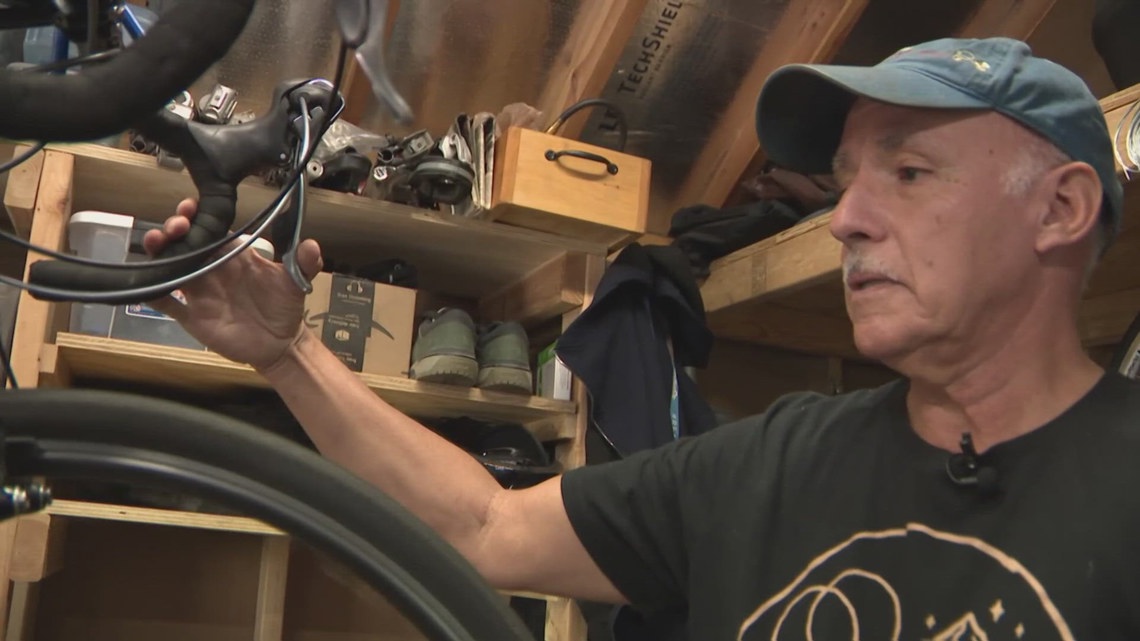Idalia could approach Florida on Wednesday with winds of up to 100 mph, according to the latest forecasts from the Hurricane Center.
MIAMI — Tropical Storm Idalia was near the coast of Cuba Monday on a potential track to come ashore as a hurricane in the southern U.S., the National Hurricane Center said.
At 4 a.m. CDT Monday, the storm was about 125 miles (200 kilometers) off the western tip of Cuba with maximum sustained winds of 65 mph (100 kmh). The storm was stationary at the time, the hurricane center said.
The center's update also included a hurricane advisory for the Cuban province of Pinar Del Rio.
Forecasters said they expected Idalia to become a hurricane on Tuesday in the Gulf of Mexico and then curve northeast toward the west coast of Florida.
Idalia could approach Florida on Wednesday with winds of up to 100 mph (160 kph), according to the latest forecasts from the Hurricane Center. That would make it a Category 2 hurricane.
Along a vast stretch of Florida's west coast, up to 11 feet (3.4 meters) of ocean water could surge on shore, raising fears of destructive flooding.
At a Sunday afternoon briefing, Florida Gov. Ron DeSantis noted that much uncertainty remains in the forecast.
“This thing hasn’t even gotten to Cuba yet, and the water in the Gulf is very, very warm and so that will provide some fuel for this thing to pick up some more speed,” DeSantis said.
Large parts of the western coast of Florida are at risk of seawater surging onto land and flooding communities when a tropical storm or hurricane approaches. That part of Florida is very vulnerable to storm surges, Jamie Rhome, deputy director of the National Hurricane Center, said Sunday.
“So it will not take a strong system or a direct hit to produce significant storm surge,” he said. “So if you’re anywhere along the Florida Peninsula, western Florida Peninsula, so let’s say from about Fort Myers northward to the Panhandle, you've really got to be paying attention.”
In Cedar Key, a fishing village that juts out into the Gulf of Mexico, a storm surge is among the greatest concerns, said Capt. A.J. Brown, a fishing guide who operates A.J. Brown Charters. The concern is that if the storm strikes Florida just to the north, Cedar Key would get the powerful surge that comes from being on the southeastern side of the storm.
There are worries in Cedar Key about a storm surge of two to five feet of ocean water, Brown said, and if the storm surge reaches five feet “it would cover most everything downtown.”
At the popular Bridge Tender Inn in Bradenton Beach, a large tent covering the tiki bar area where musicians play might have to be taken down in preparation for Idalia, assistant manager Shannon Dunnan said Sunday.
“If we get a big storm that hits, it would probably rip that tent in half,” she said.
But at this point, plans are for the establishment to stay open, Dunnan said.
Mexico’s National Meteorological Service on Sunday warned of intense to torrential rains showering the Yucatan Peninsula, with winds as fast as 55 mph (89 kph).
It said the storm could cause anything from powerful waves to flooding in southern Mexico, mainly around coastal cities in the Yucatán and Quintana Roo states. It asked citizens to stay alert.
Florida emergency officials on Sunday urged residents to keep their vehicle gas tanks at least half-full in case they need to evacuate.
“This will ensure you can evacuate tens of miles inland to a safe location should the need arise,” the Florida Division of Emergency Management said on social media.
Florida has mobilized 1,100 National Guard members, and “they have at their disposal 2,400 high-water vehicles, as well as 12 aircraft that can be used for rescue and recovery efforts,” said DeSantis, the Republican governor who is a candidate for the GOP presidential nomination.
“If you are in the path of this storm, you should expect power outages,” he added. “So please prepare for that, particularly if this storm ends up coming in the Tallahassee region, there’s a lot trees that are going to get knocked down, the power lines are going to get knocked down – that is just going to happen, so just be prepared for that and be able to do what you need to do.”
Thirty-three Florida counties are under a state of emergency, the state emergency management agency said.
So far this year, the U.S. East Coast has been spared from cyclones. But in the West, Tropical Storm Hilary caused widespread flooding, mudslides and road closures earlier this month in Mexico, California, Nevada and points to the north.
The National Oceanic and Atmospheric Administration recently said the 2023 hurricane season would be far busier than initially forecast, partly because of extremely warm ocean temperatures. The season runs through Nov. 30, with August and September typically the peak.
___
Associated Press writer Jeff Martin contributed to this report from Woodstock, Georgia.
.png)









 English (US) ·
English (US) ·